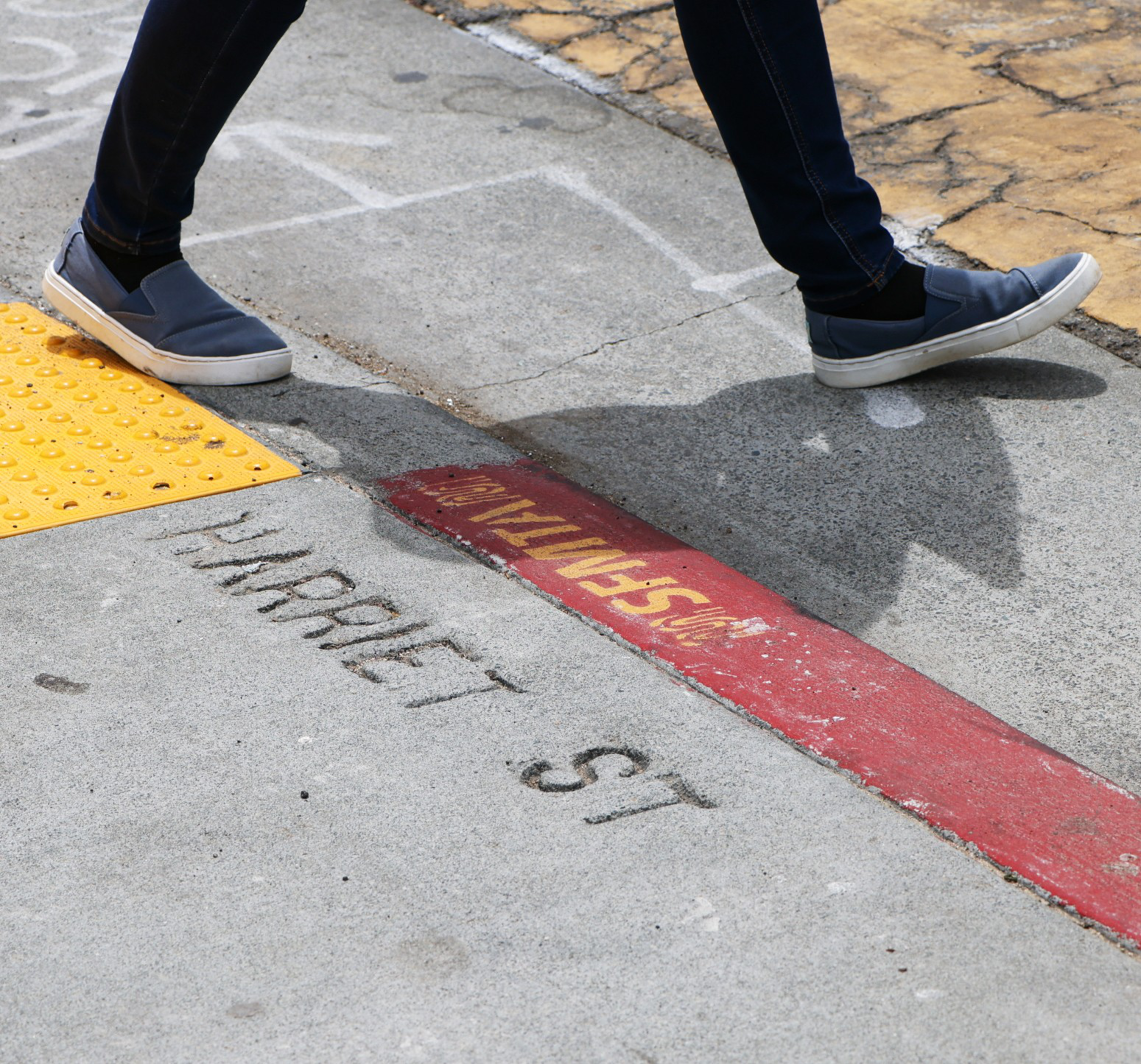Owing to its unique topography, haphazard growth as a 19th-century maritime center and its reconstruction after the 1906 earthquake and fire, San Francisco is a city of one-block sidestreets and noirish alleys. Lacking Manhattan’s grid, Chicago’s flat immensity or Los Angeles’ extensive network of freeways, our urban landscape has a unique and maddening charm.
Among its many quirks are what appears to be a high number of streets seemingly named for women: Clementina, Ramona, Mary, and (of course) Dolores. The late 1800s—when much of San Francisco’s urban core was laid out—were hardly halcyon days for gender equality. So why, especially when walking through SoMa, do you happen upon so many streets with names like Julia, Annie, Harriet and Zoe?
Legend has it that most of these women were sex workers—or, if you prefer, Barbary Coast courtesans. There’s some historical basis for this: Like much of the proverbial Wild West, early San Francisco’s gender ratio skewed heavily toward unmarried young men (opens in new tab), and the Gold Rush-era city’s women found work in service industries of all kinds. But historians have cast doubt (opens in new tab) on this “ladies of the night” theory as being too pat, too winking. Others with a keen eye for commercial shipping registers have noted that some streets may, in fact, have been named for ships that passed through the port.

Whatever the origin, they’re there—and there used to be far more of them, too. More than 100 years ago, when Rincon Hill—where the Bay Bridge touches down—was nearly bulldozed out of existence, what is now referred to as Central SoMa was called “Happy Valley.” Full of streets with names like Louise, Elizabeth and Jane (opens in new tab), the area eventually deteriorated to the point where 1970s redevelopment quite literally obliterated them in favor of the modernist superblocks where the Moscone Center now sits.
Plenty such streets remain today, though, including several outside of SoMa: from Linda Street in the Mission with its unique zag to Blanche and Nellie streets in Noe Valley to Oceanside’s Margaret Avenue, the course of which takes it between streets that recall antebellum feminine wiles (Tara) and the steely goddess of war (Minerva).
Of course, far more streets are plainly named for men, from mayors and city engineers (Van Ness, Bryant, O’Shaughnessy) to the largely unremarkable 19th-century presidents who populate the Western Addition (Fillmore, Pierce, Buchanan).
Part of what feels like asphalt feminism could also be a variation of confirmation bias, instilled into the heads of urbanites accustomed to eurocentric, patriarchal nomenclature. Uncommon street names like Bluxome or Ringold may be curios, but they “feel” like street names, whereas a dead-end alley named Kate Street jumps out. Stumble on four or five more examples— especially in a pedestrian-heavy neighborhood with above-average tourist traffic, like SoMa—and it appears that the city’s planners deliberately undertook a program of gender parity. In reality, for every Grace, there’s a Washburn, and for every Annie, an Anthony.
It’s not as if San Francisco’s overall cityscape is a paragon of gender equity, either. Ahead of Golden Gate Park’s 150th anniversary, Curbed SF observed (opens in new tab) that only two of the 22 statues in the entirety of its 1,017 acres were women, of whom one (“Pioneer Woman”) is an allegorical representation. There may very well be no rhyme or reason to any of it, as with the physical streets themselves.
Dolores, probably the city’s best-known street with a woman’s name, is of course named for Mission Dolores and predates the establishment of San Francisco by seven decades. But the lengthiest such street may be Octavia (opens in new tab), which runs from Fort Mason to Market Street, where it turns into Interstate 80 and, from there, essentially spans the entire continent. The name evokes an ancient Roman noblewoman, but the etymology is considerably humbler: She was the sister of one Charles Gough, a prominent community member in 1850s San Francisco and, by trade, a milkman.
